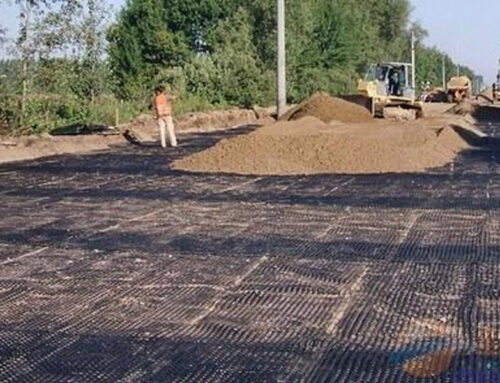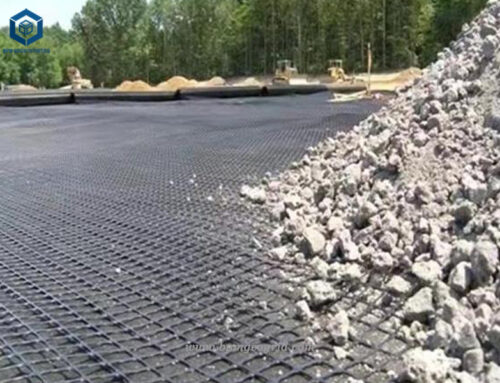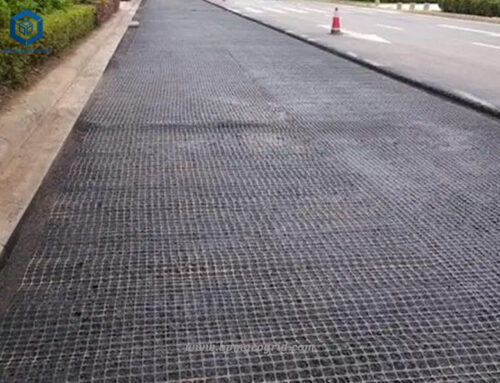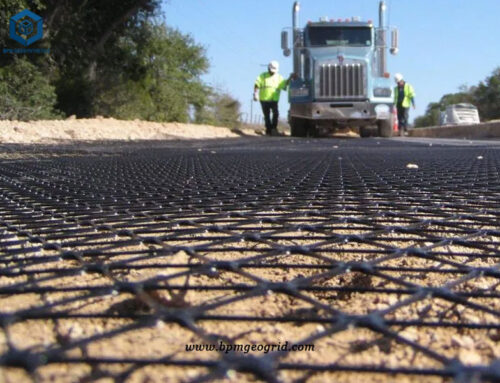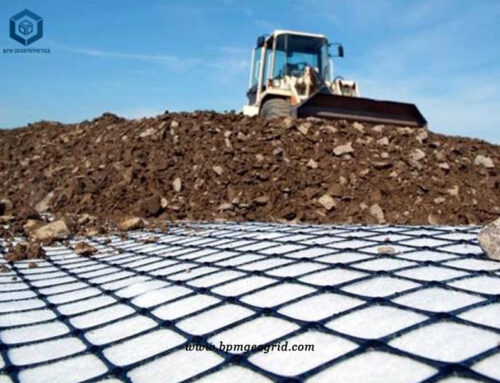Case Study
- Location : Thailand
- Product(s) : HDPE Uniaxial Geogrid 150kN
- Application : Road Construction
Issue
BPM customer form Thailand said that the Cuban highway required HDPE uniaxial geogrid for subgrade strength and stability. In the process of road bearing vehicles, it is necessary to overcome the crushing pressure of heavy load on subgrade. Therefore, it is necessary to select a grating reinforcement and stabilization geosynthetic material with high strength, strong service life, corrosion resistance and stable strength level in the subgrade.
Solution
After discussion, the BPM team recommended HDPE uniaxial geogrid and biaxial geogrid to the customer. Then the customer also sent us the specifications of the required products. We gave a similar product, namely HDPE Uniaxial Geogrid 150kN, according to the indicators required by the customer. The reason is that the unidirectional geogrid is formed by extruding high molecular polymer (PP or HDPE) into thin plate, punching regular hole network, and then stretching longitudinally. Unidirectional tension geogrid is a kind of high strength geomembrane with high polymer as main raw material, adding certain anti ultraviolet and anti-aging AIDS, and unidirectional stretching to make the original scattered chain molecules rearranged in a linear state, extruded into thin sheets, then punching regular holes, and then longitudinally stretched. In this process, the polymer is in a directional linear state and forms a long elliptical reticular integral structure with uniform distribution and high node strength. This structure has quite high tensile strength and tensile modulus. The tensile strength reaches 100-200mpa, which is close to the level of low carbon steel. It is much better than traditional or existing reinforced materials. In particular, this kind of products have high early tensile strength and tensile modulus exceeding the international level (elongation is 2% – 5%). It provides the soil with an ideal chain system of force bearing and diffusion. It is a widely used reinforcement material to adapt to various soils. Its main features are: high tensile strength, good creep performance, convenient construction and low price.
After communication and negotiation, he finally confirmed the quality of our HDPE Uniaxial Geogrid products and signed a trial order contract with our company.
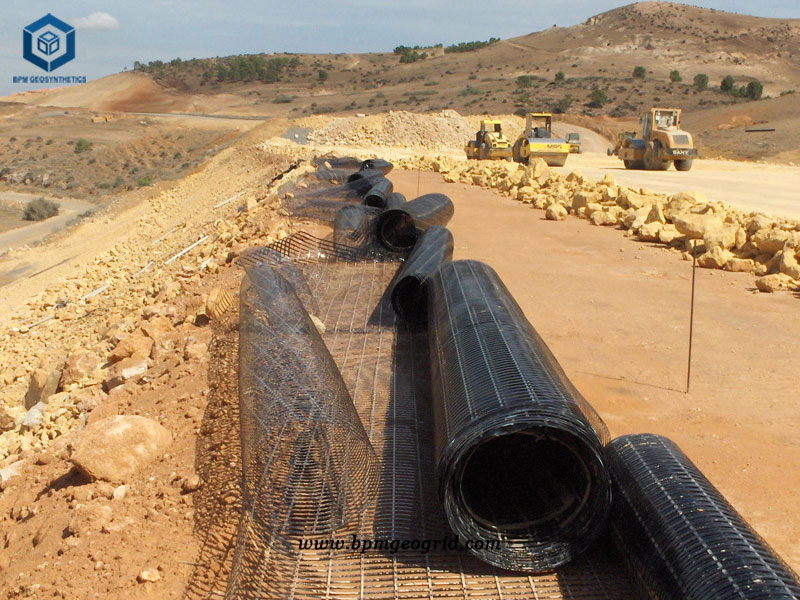
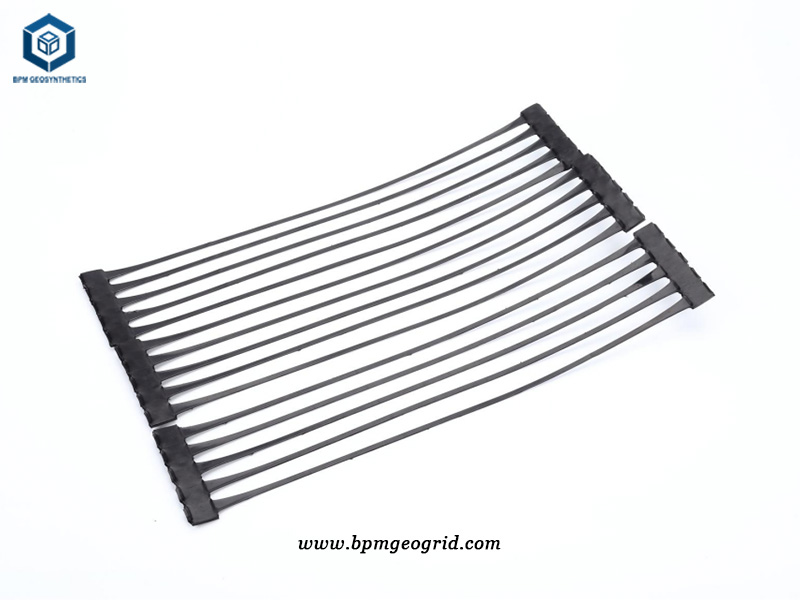
Main purpose
- HDPE uniaxial geogrid is used to strengthen weak foundation. HDPE geogrid can quickly improve the foundation bearing capacity, control the development of settlement, and effectively distribute the load on the wider subbase, so as to reduce the thickness of the base, reduce the project cost, shorten the construction period and prolong the service life
- HDPE uniaxial geogrid is used for reinforced asphalt or cement pavement. HDPE geogrid is laid at the bottom of asphalt or cement pavement, which can reduce rutting depth, prolong pavement fatigue life, and reduce asphalt or cement pavement thickness to save cost.
- HDPE uniaxial geogrid is used to reinforce the embankment slope and retaining wall: the traditional embankment, especially the high embankment, often needs to be overfilled and the edge of the shoulder is not easy to be compacted, resulting in frequent rain infiltration, collapse and instability of the slope in the later stage. At the same time, a slower slope is required, which covers a large area, and the retaining wall also has the same problem, Reinforcement of embankment slope or retaining wall with geogrid can reduce one-half of the floor area, prolong the service life and reduce the cost by 20-50%.
- HDPE uniaxial geogrid is used to strengthen River and seawall. HDPE geogrid can be made into gabion and used together with the grid to prevent the dam from collapsing due to seawater scouring. Gabion has permeability, which can slow down the impact of waves, prolong the service life of the dam, save manpower and material resources and shorten the construction period.
- HDPE uniaxial geogrid is used to treat waste landfill site: geogrid is used in combination with other geosynthetics to treat waste landfill site, which can effectively solve the problems of uneven settlement of foundation and emission of derived gas, and improve the storage capacity of waste landfill site to the greatest extent.
- Special purpose of HDPE uniaxial geogrid. The HDPE geogrid has low temperature resistance. After repeated cooling and heating cycles at – 45 ℃ – 50 ℃ for 200 times, all performance indexes meet the requirements and have passed the test of Qinghai Tibet railway. It is suitable for the unfavorable geology of low ice frozen soil, ice rich frozen soil and high ice content frozen soil in the north.
Key Points of Construction
- Construction site. The HDPE uniaxial geogrid is required to be compacted and leveled, in horizontal shape, and sharp protuberances shall be removed.
- HDPE uniaxial geogrid laying. On the flat and compacted site, the main stress direction (longitudinal) of the HDPE uniaxial geogrid installed and laid shall be perpendicular to the axis direction of the embankment, and the laying shall be smooth, without wrinkles, and as tight as possible. Fixed by inserting nails and earth rock weight, the main stress direction of the laid grid should be no joint in the whole length, and the connection between sheets can be manually bound and lapped, and the lap width should not be less than 10cm. If the grating is set in more than two layers, the seam between layers should be staggered. After large area laying, its flatness shall be adjusted as a whole. After a layer of soil is filled, before rolling, it shall be compacted again
Manual or machine should be used to tension the grid, and the force should be even, so that the grid is in a straight stress state in the soil.
- Selection of geogrid fillers. the fillers shall be selected according to the design requirements. Practice has proved that except frozen soil, swamp soil, domestic waste, chalk soil and diatomite, they can be used as fillers. However, gravel soil and sand soil have stable mechanical properties and little influence by water content, so they should be preferred. The particle size of the filler shall not be greater than 15cm, and the gradation of the filler shall be controlled to ensure the compaction weight.
- Paving and compaction of filling materials. When the HDPE uniaxial geogrid is laid and positioned, it shall be filled and covered in time, and the exposed time shall not exceed 48 hours. The flow process method of laying and backfilling can also be adopted. First pave the filler at both ends, fix the grille, and then push it towards the middle. The rolling sequence is from both sides to the middle. When rolling, the roller can’t directly contact with the reinforcement, and vehicles are generally not allowed to drive on the uncompacted reinforcement to avoid dislocation of reinforcement. The layered compaction is 20-30cm. The degree of compaction must meet the design requirements, which is also the key to the success of reinforced soil engineering.
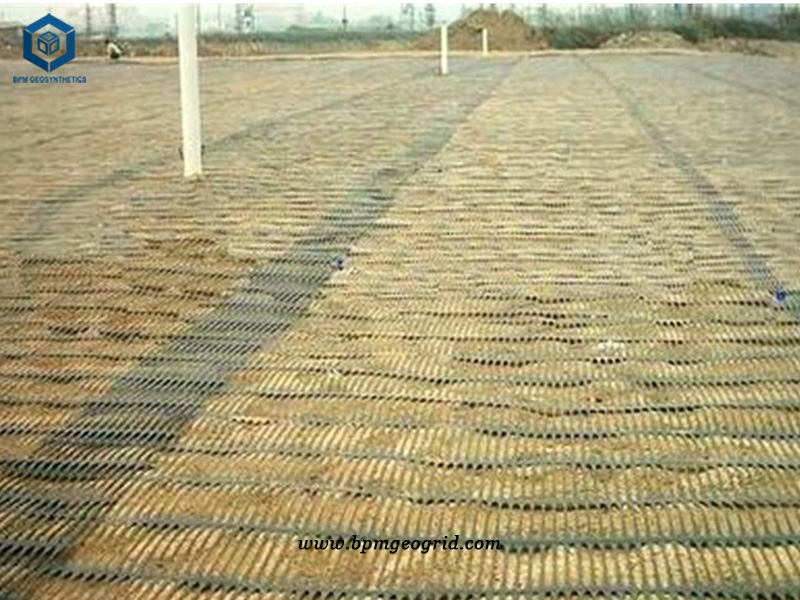
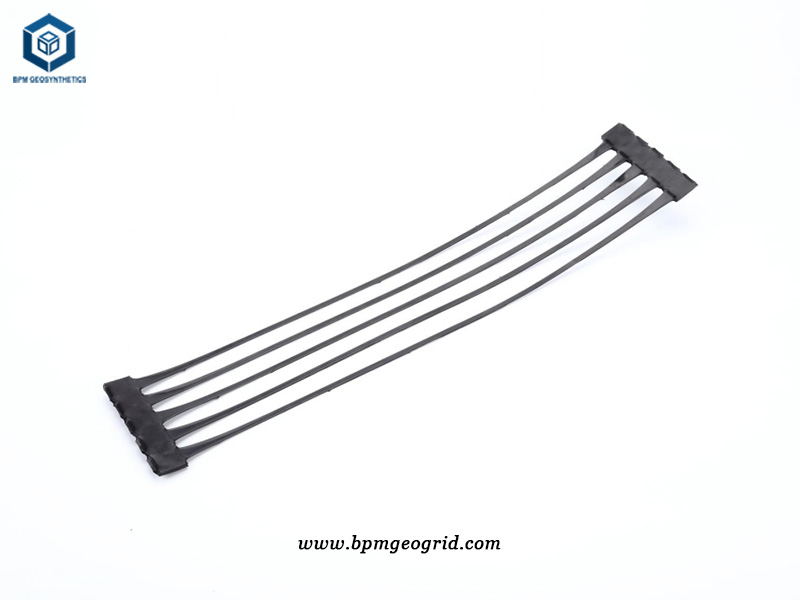
- Waterproof and drainage measures. In reinforced soil engineering, the drainage treatment inside and outside the wall must be done well; To do a good job of foot protection, anti erosion; filter and drainage measures shall be set in the soil, and geotextile and permeable pipe (or blind ditch) shall be set when necessary. Take the way of dredging drainage, can not be blocked, otherwise hidden.
After the geogrid is paved, the upper layer filler is laid manually, and the rolling is completed in time to avoid long-term exposure to the sun. Then, the material is transported, leveled and rolled mechanically. The mechanical paving and rolling are pushed from both sides to the middle, and the rolling is carried out from both sides to the middle, and the compactness is maintained to meet the specification requirements. All construction vehicles and construction machinery shall not be driven or parked on the paved geogrid. The quality of geogrid shall be checked at any time during construction. If any damage is found, such as breakage, puncturing and tearing, it shall be repaired according to the degree or replace.
Specifications of HDPE Uniaxial Geogrid for Road Construction in Thailand
- Properties – 150kN
- Specification – 1.2m×50m
- Total quantity – 30,000 square meters
- Delivery time – 15 days
About BPM
BPM manufactures and supplies many types of effective and state of the art geogrid, geomembrane, geotextile, and geosynthetics to over 36 countries. Our main innovative, high quality geogrid products include plastic biaxial geogrid, fiberglass geogrid, plastic uniaxial geogrid, warp knitting polyester geogrid, and steel plastic georgic mesh, etc. BPM brand brand high quality geosynthetic products had been certificated by the ISO9001, ISO14001,OHSAS18001 Soncap, SASO and BV, SGS and Intertek, etc.
If you have any questions or inquiries, please fill in and submit the form to contact us.

